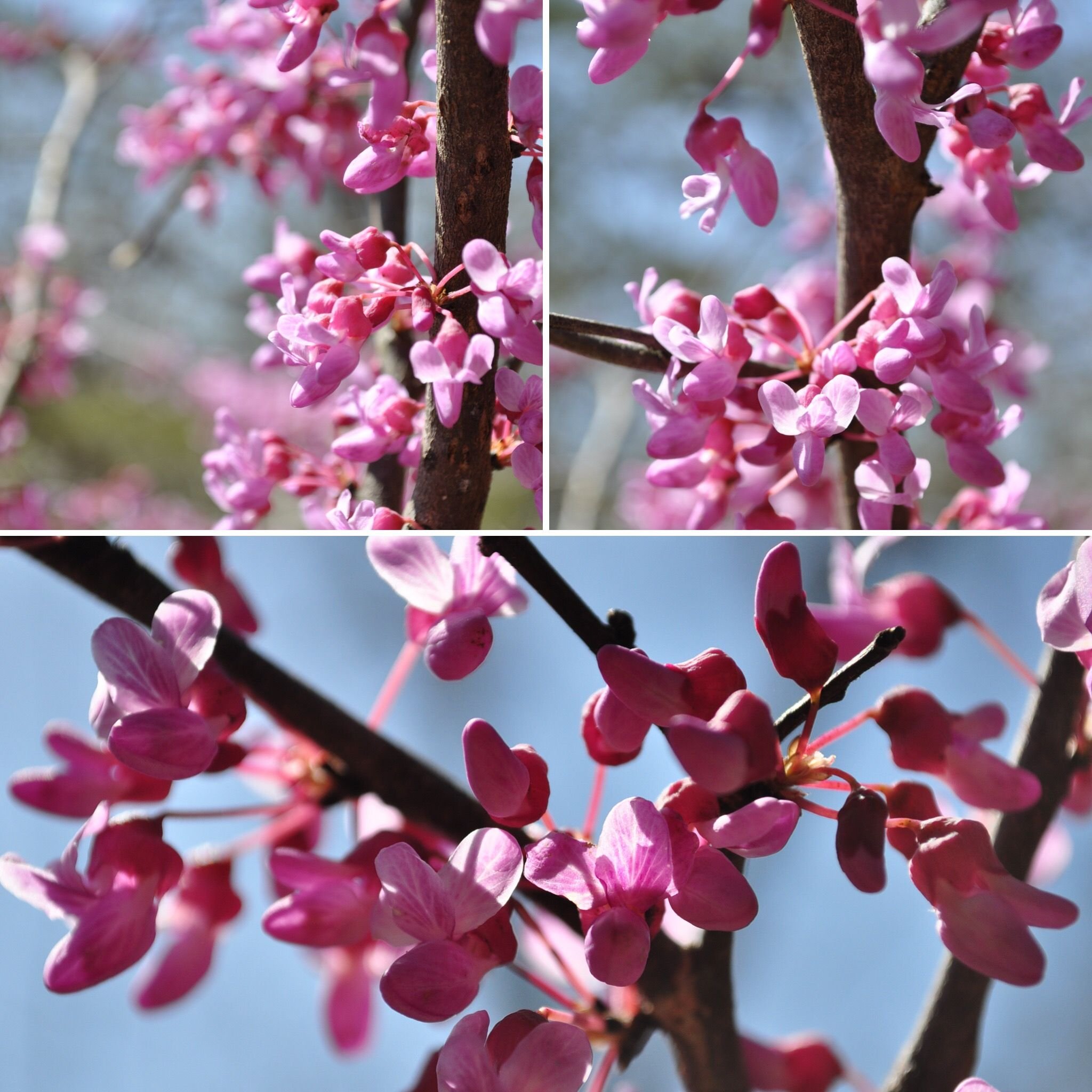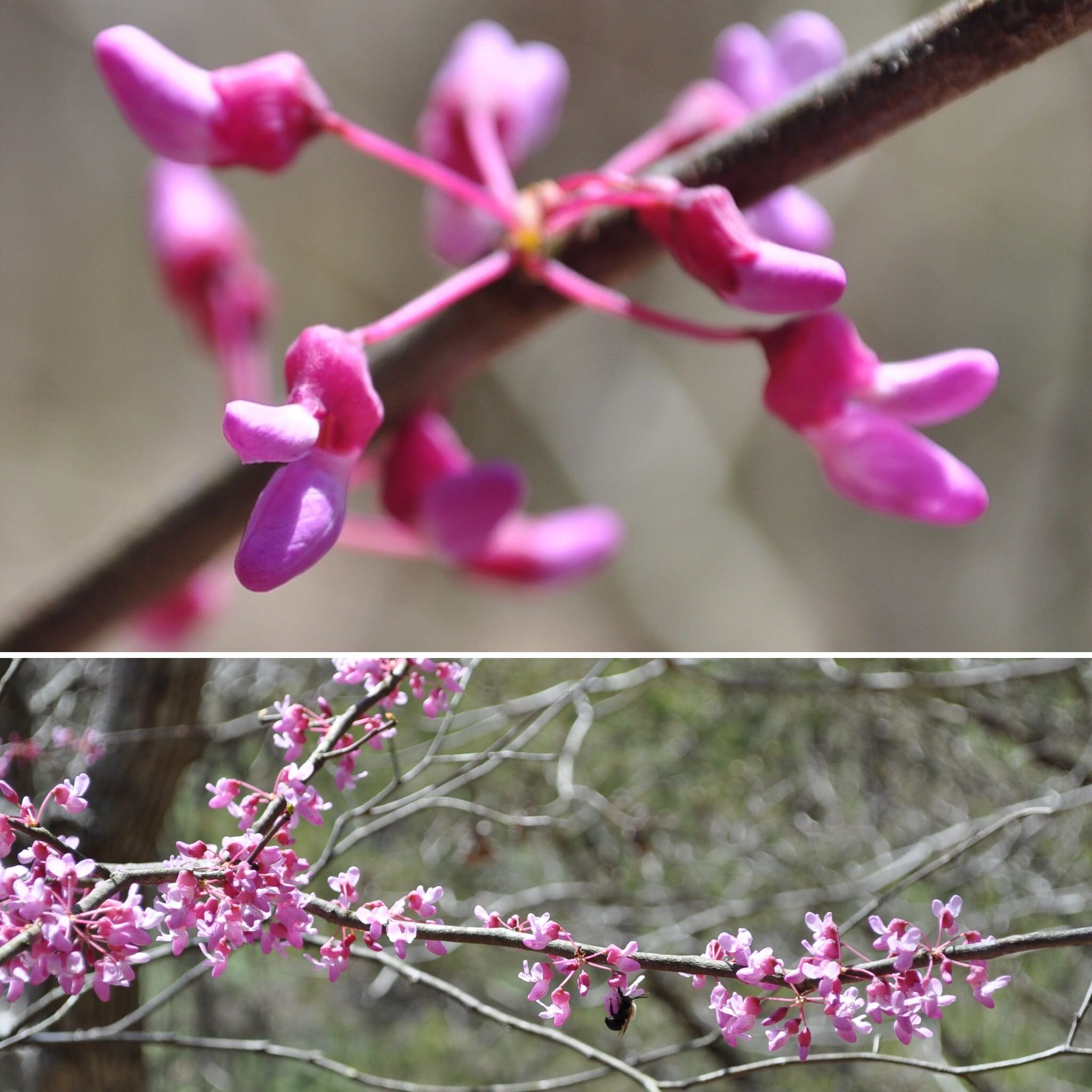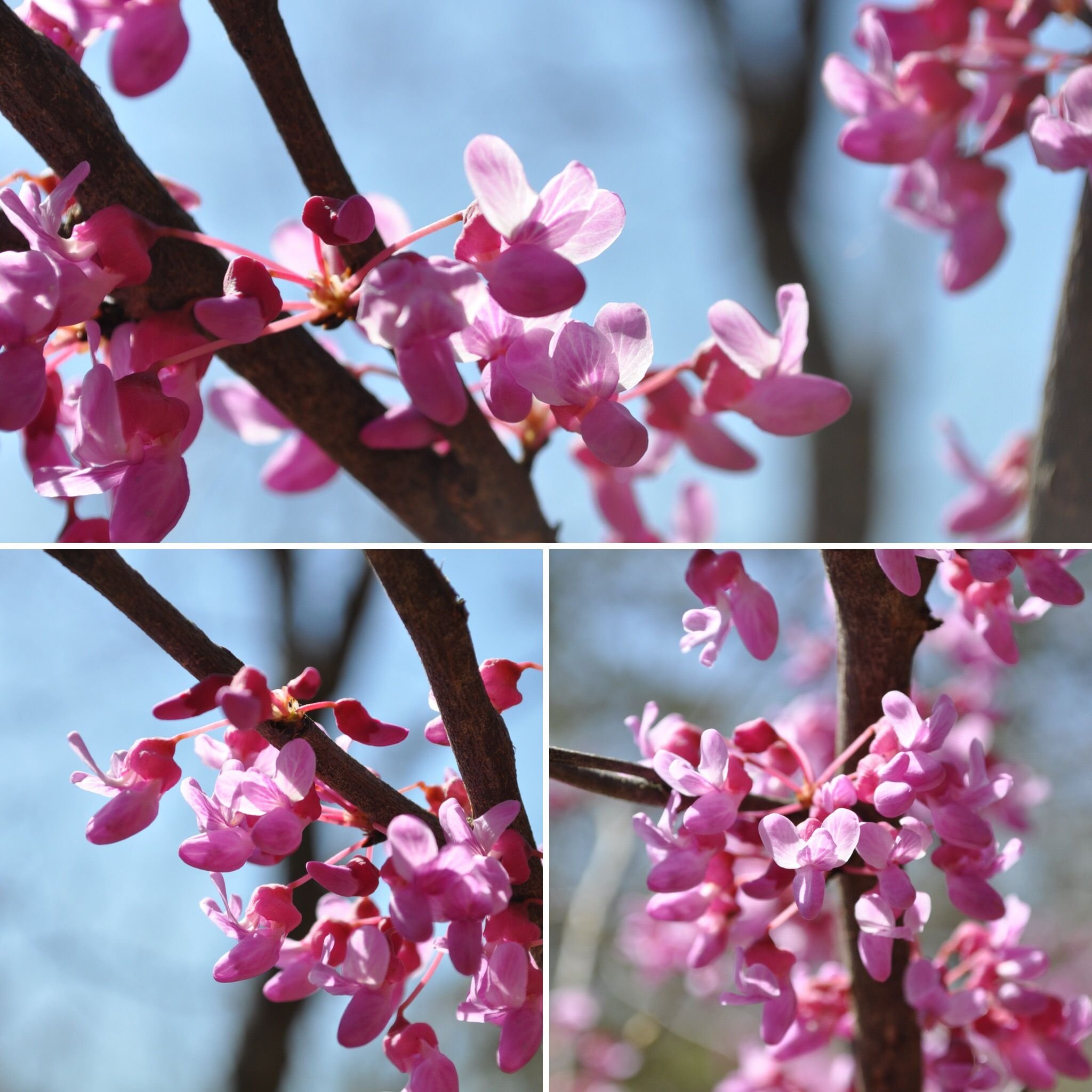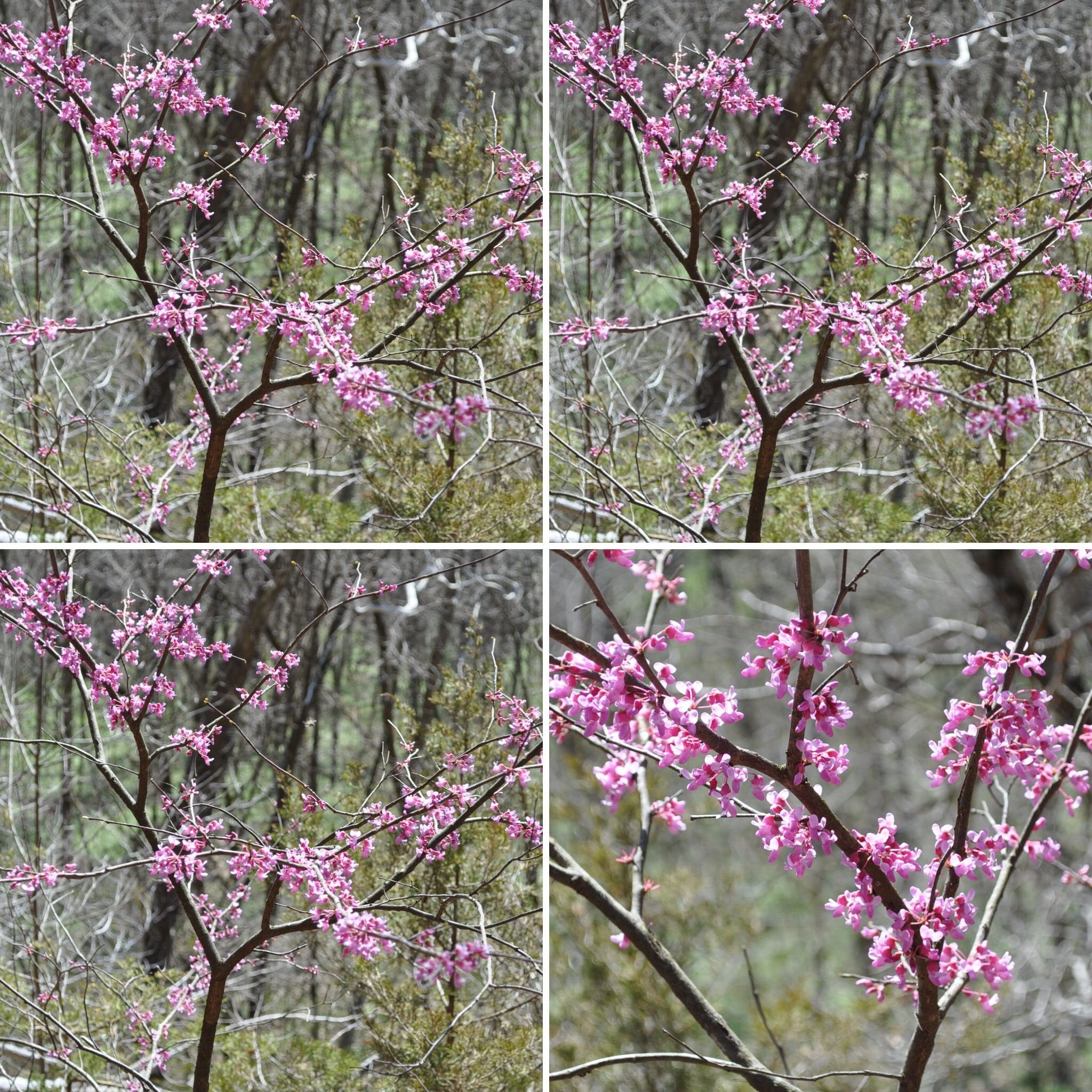
The return of spring is full of excitement as the Earth dwellers rise from slumber.
One of our favorite things is seeing the flowers that appear even before leaves start to unfurl. This has always stunned me! Seeing flowers on bare trees is truly remarkable. The redbud tree (Cercis canadensis) is one of the most stunning and easy to identify spring flowers, and it's quite tasty too!
Feast your eyes on the exquisite wild beauty of the redbud tree blossoming on our land!
All photos are mine (as always! Unless otherwise noted.)

Eating flowers is a fantastic way to enjoy spring time.
Our winters are mild here in Missouri but come spring we're definitely ready for light fresh foods.
We've been eating lettuce from our high tunnel everyday, but there's something extra special about wild foods and redbuds are a great example. The visual appeal and light, bright and subtle pea-like flavor make redbuds a delightful spring food we are happy to have near home.

Flowers are food too
I know not many flowers make it into the kitchen in any real quantity, but they deserve our attention.
What they lack in bulk they make up for with their full flavor and beauty. Dandelions are a commonly overlooked, but tasty flower that deserves mention and if you've ever eaten squash flowers you'll know how great they taste. Black locust flowers anyone?
A real treat come April in Missouri are the bright redbuds that have such a soft flavor, like peas or green beans with a hint of lemon. They are obviously showy and ring in spring with a burst of color, but have you ever eaten them?
Analysis of flower extracts prove the presence of anthocyanids (from Greek for blue flower), the same pigment in blueberries and other brightly colored fruits and vegetables. They reportedly act as an antioxidant, but the jury is still out on this one.

Diversifying our palate
One thing we LOVE about foraging and eating locally is the new flavors we're exposed to.
I wasn't familiar with redbuds until we moved to MO and have since learned to love them. The flowers were consumed by Native Americans both raw and boiled, as well as the young green pods and seeds (which were eaten roasted). The tree grows up to 30' tall, and the flowers are easily found in understory as they are a splash of color amidst brown and greys and are born both on branches and stems.

Belonging to the Fabaceae family, they share the typical "beany" taste and ability to fix nitrogen in the soil.
They are very easily gathered and make a great additions to salads, soups, omelettes and so on. A month ago while camping further south we enjoyed a wild food omelette including redbuds, chickweed and wild onion, what a delight!
Domestic foods often have their wild flavors bred out of them, but there is such diversity in this wild palate. They enliven any meal both for the eyes and the tongue at a time when spring is just beginning. We might even try out pickling them for later use, we'll see how the season unfolds.

Beyond Gardens
We are obviously quite focused on food production and lean heavily into perennials, but spring is a great opportunity to appreciate the bounty of wild things near us.
To taste the forest in a flower, to witness the unfolding of ferns and to hunt for mushrooms poking up beneath leaves is spring to us. We are continually expanding our foraging repertoire and appreciate the chance to engage with our ecosystem in such an intimate manner.
Here's to many more moons learning and growing with this place we call home!

